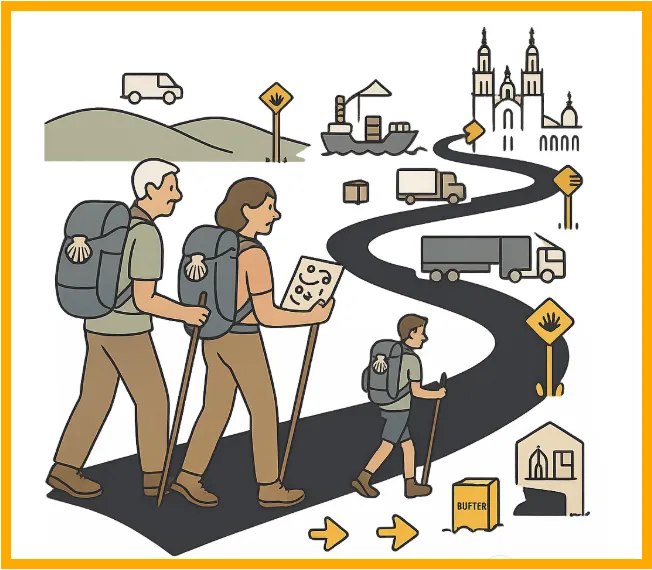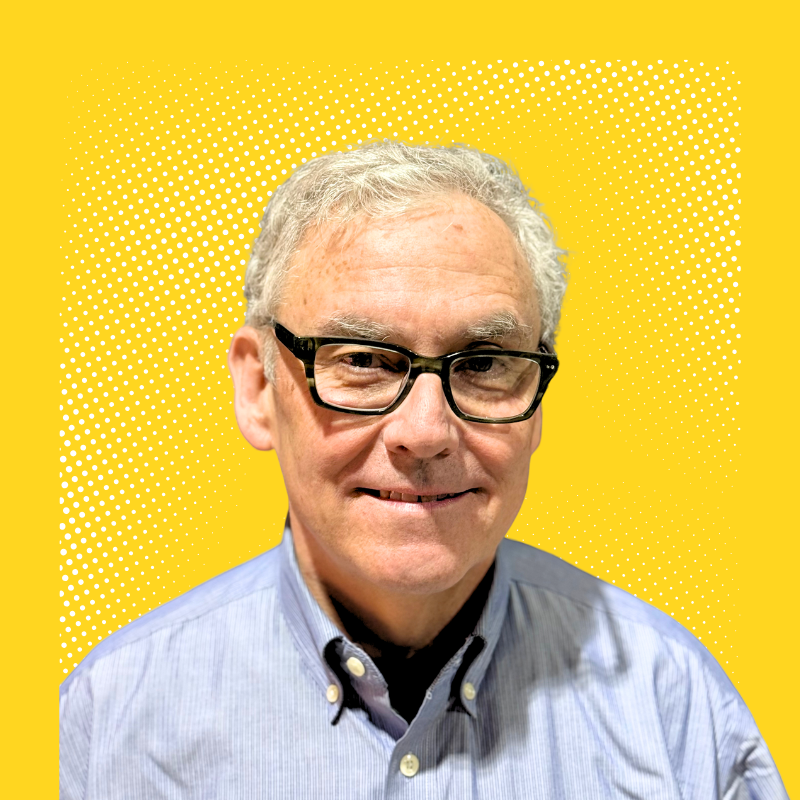The Camino de Santiago has been a pilgrimage for more than a thousand years—many paths, one destination: Santiago de Compostela. My wife and I are on our second Camino. Last year we walked six days to Santiago. This year we started farther away in Porto, Portugal, planning a 12-day route.
As a lifelong logistics professional, I can’t help but see the Camino as a living case study in planning, execution, and continuous replanning. You build a good strategy up front—and then reality asks for revisions.
Plan the route, then expect detours
We planned months ahead: flights from the U.S., transportation to the starting point, and a return home. We reserved pilgrim-friendly hotels and hostels, mapped daily stages, and—because we’re modern pilgrims in our sixties—arranged a luggage service to shuttle our bags from place to place so we could walk light. That’s capacity planning, dependency mapping, and smart outsourcing.
Meals and water required on-the-ground decisions. Breakfasts were covered; lunches and dinners were not. The route winds through forests and hills, beaches and farm country, towns, and cities. Public fountains are common—but not guaranteed. So, we treated hydration and food like variable supply: top up when you can, always carry a buffer.
Execution is where the truth shows up
On foot, things go wrong. Blisters happen, even with good shoes and daily care. Knees need support. People trip on uneven sidewalks, rocky paths, and, yes, their own walking sticks. Sometimes you miss a turn, arrive late, and find restaurants closed, especially in small towns.
One afternoon a small café on a rural stretch was swamped by a surge of pilgrims. The place was swamped, and service broke down. Our workaround: we pulled out the sandwiches and fruit we’d stashed that morning. Contingency planning doesn’t have to be fancy; it has to be ready.
The same game, different terrain
In logistics, we create strategies, build project plans, and run pre-mortems to stress-test “what ifs.” And then a ship wedges in the Suez Canal. Or containers go overboard in rough seas. A vessel sits at anchor for weeks. Your bags don’t arrive; your shipment doesn’t either. The discipline is the same on Camino and on dock: keep the objective in sight and replan fast.
When containers arrive late, you triage. Expedite the SKUs that matter most to the DC, and claw back service where you can. On the Camino, adjust the day’s stage, finding an alternate route, or changing where we sleep. The principle is identical: protect the critical path.

The goal and the journey
Our destination, Santiago, is the project objective: arrive on time and in good condition. But the Camino also reminds me that the journey is part of the objective. Collaboration matters. You help others, and you let them help you. Communication keeps small problems small. Great journeys teach, and good teams grow stronger along the way.
My old friend and transportation pro, Rich, has a line I love: “Shipping happens.” It’s funny because it’s true—and because it points to the mindset that wins. Plan well. Walk light. Check often. Adjust early. Keep moving.
Find out about WOWL. Email AndyG@WOWL.io





